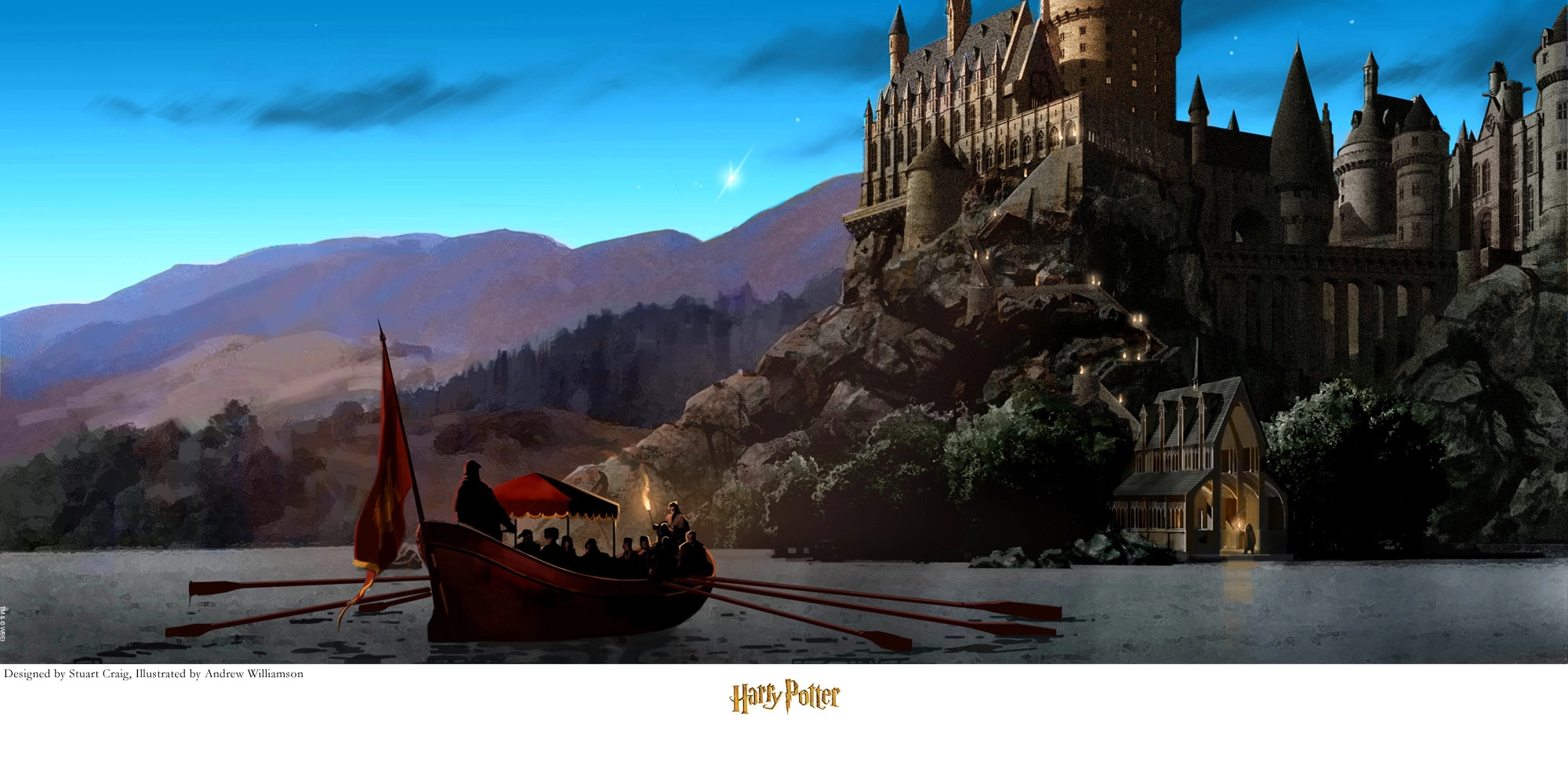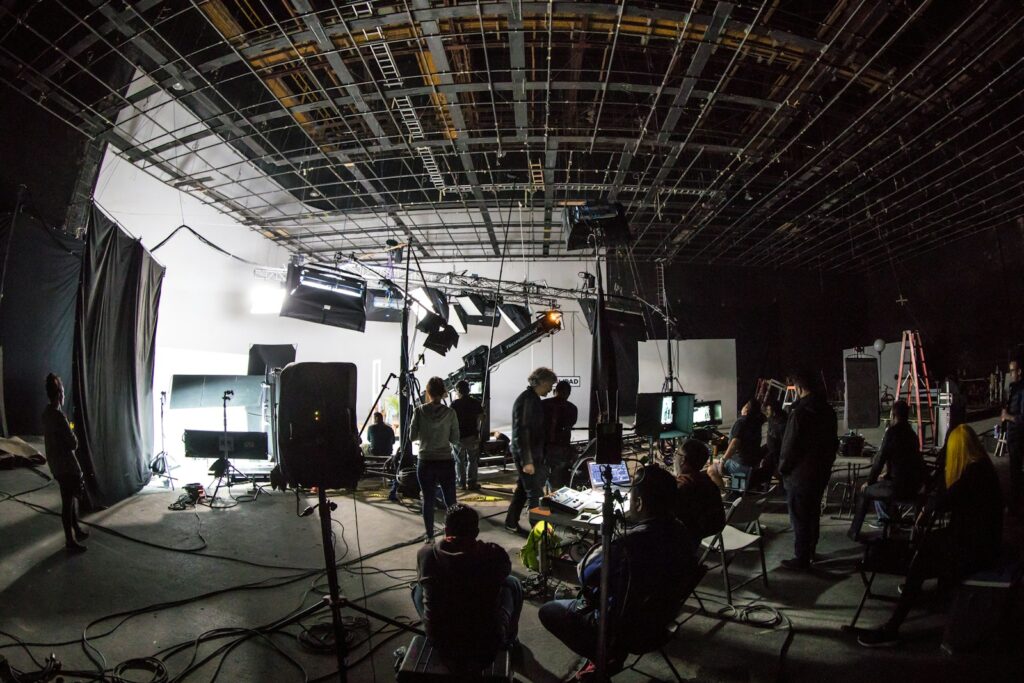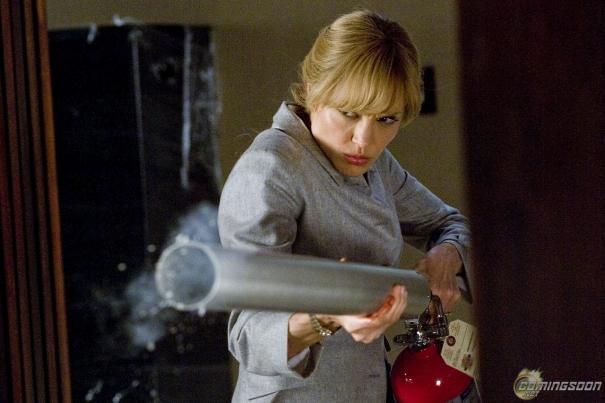
The world of cinema, and indeed the broader landscape of popular culture, mourns the passing of Stuart Craig, a titan of production design whose unparalleled vision shaped some of the most beloved and visually arresting cinematic universes. Mr. Craig, a three-time Academy Award winner, died on Sunday at his home in Windsor, Britain, at the age of 83, from complications of Parkinson’s disease. His death was confirmed by his friend and fellow production designer, Neil Lamont, in a post on Facebook. Renowned for his meticulous attention to detail and a profound ability to transport audiences to different eras and realms, Mr. Craig’s career spanned over five decades, leaving an indelible mark on an array of films, from grand historical dramas to fantastical adventures.
His legacy is perhaps most widely celebrated for his extraordinary work in crafting the visual identity of all eight “Harry Potter” films and their three “Fantastic Beasts” spinoffs, a monumental undertaking that captivated millions globally. Beyond the silver screen, his genius extended to the immersive Harry Potter sections at the Universal Resort in Florida, transforming literary imagination into tangible, awe-inspiring reality. Yet, his remarkable achievements were not confined to the wizarding world; his portfolio includes acclaimed works like “Gandhi,” “Dangerous Liaisons,” and “The English Patient,” each earning him an Oscar for production design. This article offers an in-depth retrospective on the life and career of Stuart Craig, celebrating the artistic mastery that defined him as one of the greatest production designers of recent decades.
Mr. Craig’s unique approach to design, characterized by a deliberate exploitation of clashing periods and a dynamic blend of ancient and modern sensibilities, allowed him to create worlds that felt both timeless and immediate. His ability to seamlessly integrate the practical with the digital, treating computer-generated imagery with the same rigor as physical sets, exemplified his forward-thinking craftsmanship. Through his work, he not only set new benchmarks for cinematic design but also cultivated a reputation for grace, kindness, and humility, as attested by those who had the privilege of working alongside him. We explore the pivotal moments and defining projects that cemented Stuart Craig’s status as a true visionary.

1. **The Foundation of a Legend: Early Career and First Forays into Design**Stuart Norman Craig’s journey into the world of production design began not with a grand cinematic ambition, but with a youthful passion for painting scenery for a local production of “The Yeomen of the Guard,” a comic opera by Gilbert and Sullivan. Born on April 14, 1942, in Norwich, a city northeast of London, Mr. Craig described himself as an indifferent student, yet this early encounter with set design ignited a lifelong artistic calling. His innate talent quickly became apparent, leading him to pursue formal training in set design at the Royal College of Art in London, a prestigious institution known for nurturing creative minds.
Upon graduating in 1966, Mr. Craig wasted no time in entering the film industry, immediately joining the crew of “Casino Royale,” a James Bond spoof starring Peter Sellers. This early experience, though on a less serious project, provided him with invaluable exposure to the fast-paced and intricate world of film production. The 1970s saw him diligently climbing the ranks of apprenticeships, honing his craft and gaining comprehensive knowledge of the multifaceted demands of set design. This period of foundational learning and hands-on experience was crucial in building the robust skill set that would define his illustrious career.
His first credit as head production designer arrived with “Saturn 3” (1980), a sci-fi thriller featuring Farrah Fawcett and Kirk Douglas. While the film itself was critically skewered as “forgettable,” Mr. Craig’s contribution was noted. His design work on “Saturn 3” was impressive enough to capture the attention of the industry, demonstrating his capability to tackle complex visual challenges even within an otherwise panned production. This initial solo venture marked a significant turning point, propelling him towards more prominent and critically acclaimed projects that would soon follow.

2. **The Breakthrough Moment: “The Elephant Man” and Critical Acclaim**Following his work on “Saturn 3,” Stuart Craig swiftly moved to a project that would prove to be his true breakthrough: “The Elephant Man” (1980). This critically acclaimed film, directed by David Lynch and starring Anthony Hopkins and John Hurt, told the poignant story of a deformed man in late 19th-century London. Mr. Craig’s production design for this period piece was not only atmospheric but also deeply evocative, perfectly capturing the somber, intricate details of Victorian London and the harrowing environment faced by its protagonist.
“The Elephant Man” brought Mr. Craig his first Academy Award nomination for production design, an early testament to his exceptional talent and meticulous approach. This recognition, so early in his career as a lead designer, firmly established him as a rising star in the industry. The film’s success also garnered him a BAFTA award, Britain’s equivalent of the Oscar, further solidifying his reputation within the British film community and beyond.
This early success with a challenging and sensitive subject matter showcased Mr. Craig’s ability to imbue his sets with profound emotional resonance, moving beyond mere aesthetics to serve the narrative and character development. It was this project that truly “loftetd him into the pantheon of great set designers,” earning him a reputation for paying close attention to period detail across films with broad thematic and visual landscapes. The foundation for his subsequent grand achievements was thus firmly laid.

3. **Oscar-Winning Masterpieces: Crafting Historical Worlds**Stuart Craig’s exceptional talent for historical accuracy and atmospheric design was repeatedly recognized by the Academy Awards, earning him three Oscars for production design throughout his career. His first win came for “Gandhi” (1982), a sprawling biographical drama set in India and South Africa during the first half of the 20th century. For this film, Mr. Craig meticulously recreated the diverse and complex environments of the subcontinent and South Africa, transporting audiences back to a pivotal era with breathtaking authenticity.
His second Academy Award was for “Dangerous Liaisons” (1988), a sophisticated tale of 18th-century France, starring Glenn Close, John Malkovich, and Michelle Pfeiffer. Here, Mr. Craig’s designs perfectly captured the opulent, yet often insidious, world of French aristocracy, where lavish interiors and meticulously arranged settings underscored the dramatic tensions and moral decadence of the characters. His work not only provided a beautiful backdrop but also visually enhanced the film’s nuanced exploration of power, seduction, and betrayal.
The third Oscar came for “The English Patient” (1996), set in Tuscany and North Africa during World War II. This film demanded a versatile hand in design, from the stark beauty of desert landscapes to the intimate, war-torn European settings. Mr. Craig, alongside his longtime set decorator Stephenie McMillan, created environments that were both sweeping and intensely personal, contributing significantly to the film’s critical acclaim and its multiple Academy Awards. Director Richard Attenborough, who worked with Mr. Craig on “Gandhi” and “Cry Freedom,” famously stated, “I would postpone a film to use him… He has the most wonderful taste; there’s nothing that jars.” This sentiment underscored the industry’s deep respect for Mr. Craig’s unparalleled ability to craft compelling historical worlds.

4. **The Call to Magic: Stuart Craig’s Entry into the Harry Potter Universe**By 1999, Stuart Craig had already established himself as a preeminent production designer with three Academy Awards under his belt. Yet, a new, unprecedented challenge awaited him. One afternoon, while helping to set up a nursery for one of his grandchildren, he received a fateful call from director Christopher Columbus, who asked if he would work on the first Harry Potter film, “Harry Potter and the Sorcerer’s Stone.” This unexpected offer would dramatically redefine the trajectory of his career and solidify his place in cinematic history.
Mr. Craig confessed to The Guardian in 2011, that his “first reaction was fright: How the hell are we going to do this?” The sheer scale and intricate detail of J.K. Rowling’s wizarding world, which he had never encountered before, presented an enormous creative hurdle. Determined to grasp the essence of the books, he “devoured it on the flight from London to Los Angeles,” where Columbus was based. This initial immersion revealed the immense scope of the project, igniting both trepidation and artistic excitement.
The immediate challenge, and what would become his greatest eventual success, was in designing an enormous, antiquated world steeped in magic without alienating the contemporary sensibilities of its young, teenage protagonists. This duality — ancient magic interwoven with modern life — became the guiding principle for the visual language of the Harry Potter films. The invitation to shape such a beloved and complex universe marked a profound turning point, requiring a synthesis of his period-drama expertise with a newfound imaginative freedom that would define his next two decades.

5. **Hogwarts’ Enduring Allure: Blending Past and Present in the Wizarding World**The iconic visual style of the Harry Potter films, particularly the enduring image of Hogwarts School of Witchcraft and Wizardry, stands as a testament to Stuart Craig’s ingenious design philosophy. He skillfully navigated the unique challenge of creating a world that felt ancient and magical, yet relatable to a modern audience. As he reflected, it was particularly helpful that the Harry Potter universe was so deeply rooted in the sensibilities of Britain, where “centuries-old cathedrals and halls rub shoulders with contemporary shops and fashion.” This intrinsic blend of old and new within the British landscape provided a fertile ground for his creative vision.
Mr. Craig articulated his approach in an interview with the journal Wide Screen in 2010, explaining, “It’s the most wonderful mix in that they wear jeans and T shirts, use ’50s technology, live in 13th-, 14th-, 15th-century surroundings, and we are deliberately exploiting those different influences and letting periods clash together in an energetic, dynamic way.” This deliberate juxtaposition of elements from various eras became a hallmark of his design. It allowed the magical world to feel deeply historical and enchanting, while still being accessible and grounded for its young characters and audience.
This stylistic choice was pivotal in establishing the authentic, lived-in feel of Hogwarts and other wizarding locations. Rather than creating a static, purely historical fantasy, Mr. Craig infused the settings with a vibrant, dynamic energy that reflected the characters’ own youthful experiences within an ancient framework. The films, primarily shot at Leavesden Studios outside London, benefited immensely from this contextual understanding and the creative freedom it afforded, enabling him to build a world that resonated across generations and continues to inspire awe.

6. **A Sustained Vision: Dedication Across All Eight Harry Potter Films**Stuart Craig’s commitment to the Harry Potter franchise was extraordinary, making him one of the few individuals who worked on all eight films, a remarkable feat of sustained creative leadership. This consistent involvement ensured a seamless visual continuity and an evolving aesthetic that deepened with each installment. From the very first film, “Harry Potter and the Sorcerer’s Stone” (2001), to the concluding “Deathly Hallows: Part 2” (2011), Mr. Craig meticulously oversaw the design, ensuring that J.K. Rowling’s imaginative worlds were translated to the screen with unwavering fidelity and grandeur.
His comprehensive oversight meant that key locations like the Hogwarts Academy, the classrooms, and the myriad other fantastical settings maintained a consistent, yet progressively darker and more intricate, appearance as the series matured. The early images of Hogwarts Academy, for instance, immediately captured the imagination, setting a high bar for the visual splendor that would define the entire franchise. Each film presented new creative challenges and expanded the magical world, and Mr. Craig was at the helm, ensuring that every detail, from the grandest hall to the smallest prop, contributed to the overarching narrative.
This dedication was not merely about maintaining continuity but also about growing the visual vocabulary of the series, adapting to the increasingly complex storylines and the darker tone of later books. His continuous presence was a cornerstone of the films’ visual success, providing a stable and imaginative force that anchored the entire production over more than a decade. The consistency of his vision allowed the audience to truly believe in and become immersed in the magical world, making his contribution irreplaceable.

7. **Expanding the Wizarding World: Beyond Hogwarts’ Walls**Stuart Craig’s monumental task of bringing the Wizarding World to life extended far beyond the hallowed halls of Hogwarts School of Witchcraft and Wizardry. As the narrative of J.K. Rowling’s books expanded in complexity and scope, so too did the geographical and architectural demands placed upon Mr. Craig and his design teams. His sustained vision ensured that new, increasingly intricate locales felt seamlessly integrated into the established magical universe, maintaining the coherent aesthetic that defined the series.
One of the most ambitious expansions was the creation of the Ministry of Magic headquarters, a sprawling and darkly bureaucratic complex envisioned as being “buried beneath central London.” This immense set required a departure from the gothic charm of Hogwarts, demanding a different kind of magical grandiosity—one that was both imposing and subtly concealed within the urban fabric. Mr. Craig’s designs for this location were crucial in depicting the more adult and often ominous governmental aspects of the wizarding society.
His ability to conceptualize and construct environments ranging from the intimate, detailed classrooms of Hogwarts to the vast, subterranean Ministry showcased a remarkable versatility. Each new location presented unique challenges in terms of scale, atmosphere, and narrative function, yet Mr. Craig consistently delivered designs that not only served the story but also deepened the audience’s immersion in the magical world. This ongoing expansion demonstrated his capacity for visual storytelling on an unprecedented scale, moving the audience through an evolving, living world.

8. **Harmonizing the Virtual and Tangible: Craig’s Design Philosophy in a Digital Age**Stuart Craig’s influence on cinematic design was not merely confined to his physical constructions; it also extended to his progressive approach to integrating digital technologies. As computer-generated imagery (CGI) expanded its capabilities throughout his decades-long career, Mr. Craig and his team adapted, learning how to incorporate these advances into their meticulous designing and building processes without sacrificing the tactile authenticity that characterized his work.
His philosophy toward CGI was remarkably pragmatic and rigorous. Rather than viewing it as a separate, abstract realm, Mr. Craig insisted on treating digital creations with the same meticulousness as tangible sets. He articulated this approach, stating, “We treat that just as we would a real set: We design it and draw it, do working construction drawings of it and give that to visual effects, and they then construct it digitally.” This ensured that virtual environments possessed the same level of detail, structural integrity, and artistic intention as their physical counterparts.
This deliberate method allowed for a seamless fusion of practical and digital elements, preventing a disjointed visual experience often seen when new technologies are hastily adopted. By applying traditional design principles to the digital realm, Mr. Craig ensured that even the most fantastical and expansive computer-generated spaces felt grounded and authentic, enhancing the overall believability and immersion of the Wizarding World. His forward-thinking craftsmanship set a benchmark for integrating evolving technology into traditional production design.

9. **The Genesis of ‘Fantastic Beasts’: Extending the Narrative Universe**Stuart Craig’s profound engagement with J.K. Rowling’s imaginative universe extended well beyond the original eight Harry Potter films. Following the conclusion of the main series, Mr. Craig remained at the helm as production designer for all three “Fantastic Beasts” prequels, committing to a “cumulative 21-year run that ended in 2022 with ‘Fantastic Beasts: The Secrets of Dumbledore’.” This unparalleled dedication underscored his integral role in shaping the entirety of the on-screen Wizarding World.
His work on the “Fantastic Beasts” franchise, which included “Fantastic Beasts and Where to Find Them” (2016), “The Crimes of Grindelwald” (2018), and “The Secrets of Dumbledore” (2022), presented a fresh set of creative challenges. These films transported audiences to earlier decades of the 20th century, introducing new protagonists and taking the magical narrative to different global cities such as New York and Paris. Mr. Craig’s designs skillfully blended the established visual language of the Wizarding World with the specific aesthetics of the 1920s and 1930s, creating environments that felt both familiar and distinctly new.
For his exceptional work on “Fantastic Beasts and Where to Find Them,” Mr. Craig was once again recognized with a BAFTA award, a testament to his continued ability to innovate and expand a beloved cinematic universe. This acknowledgment highlighted not only his consistency in maintaining the visual integrity of the franchise but also his remarkable capacity to adapt his vision to new historical periods and international settings, enriching the sprawling tapestry of Rowling’s creation.

10. **Immersive Experiences: The Wizarding World at Universal Theme Parks**Stuart Craig’s expansive vision was not confined to the silver screen; it transcended film to create tangible, immersive experiences for millions globally. At the direct request of J.K. Rowling, Universal Studios engaged Mr. Craig to design the Wizarding World of Harry Potter at its resort in Orlando, Florida, marking a significant extension of his creative legacy into the realm of physical themed entertainment.
This ambitious undertaking involved dividing the attraction between Universal’s two theme parks, seamlessly connecting them with a meticulously designed Hogwarts Express ride. Mr. Craig meticulously translated the cinematic landscapes he had crafted for the films into a three-dimensional, interactive environment. Every detail, from the cobblestone streets of Hogsmeade to the intricate interiors of Hogwarts Castle, was brought to life with the same authenticity and imaginative flair that characterized his film sets.
The success of the Wizarding World of Harry Potter in Orlando led to the replication and expansion of these attractions in Universal parks globally, including Hollywood, Osaka, and Singapore. These theme park sections, directly based on Mr. Craig’s original designs, allow visitors to step directly into the magical worlds he envisioned, reinforcing the enduring power and cultural impact of his creations far beyond the confines of cinema.

11. **A Maestro of Collaboration: Nurturing Talent and Earning Trust**Beyond his individual artistic brilliance, Stuart Craig was deeply admired for his collaborative spirit and his capacity to inspire and nurture talent within the film industry. His career was marked by significant, long-standing partnerships, notably with set decorator Stephenie McMillan, who, like Mr. Craig, worked on all eight Harry Potter films, contributing to the visual continuity and richness of the series.
His colleagues and collaborators consistently lauded not only his exceptional taste but also his character. Director Richard Attenborough, who worked with Mr. Craig on seminal films such as “Gandhi” and “Cry Freedom,” expressed immense trust in his judgment, stating, “I would postpone a film to use him… He has the most wonderful taste; there’s nothing that jars.” This sentiment captured the industry’s profound respect for his artistic discernment and unwavering quality.
Fellow production designer Neil Lamont, whom Mr. Craig mentored, offered a poignant tribute, describing him as “A true gentleman, with grace, kindness and humility.” Lamont recounted how Mr. Craig was “very generous with his time and advice, always taking the time to share his knowledge and support those around him.” This generosity of spirit fostered a deeply collaborative environment, where emerging designers could thrive under his guidance.
Producer David Heyman, who oversaw the Harry Potter films, further emphasized Mr. Craig’s impact, calling him “one of the greatest production designers to work in film” and commending his “extraordinary ability to bring out the very best in everyone around him.” Similarly, David Yates, who directed the final four Harry Potter installments, remembered him as “a giant in our industry, graceful, talented, stubborn and always nurturing and supporting emerging design talent.” These testimonials underscore a man whose creative genius was matched by his profound humanity, leaving an indelible mark on those fortunate enough to work alongside him.

12. **An Enduring Legacy: The Immeasurable Impact of a Visionary**Stuart Craig’s passing at 83 marks the end of an era for cinematic production design, yet his extraordinary legacy will continue to resonate for generations. His career spanned over five decades, encompassing a remarkable breadth of genres, from early opera scenery and science fiction thrillers to grand historical epics and the most globally beloved fantasy franchise of recent times. His consistent pursuit of visual excellence and his unique ability to translate complex narratives into breathtaking environments defined his artistry.
At the core of his enduring impact was a distinctive design philosophy: a deliberate and dynamic exploitation of clashing periods, seamlessly blending ancient and modern sensibilities to create worlds that felt both timeless and immediate. This was complemented by his meticulous attention to detail and his forward-thinking approach to integrating computer-generated imagery with the same rigor as physical sets. These principles allowed him to craft cinematic universes that were not merely backdrops but active, vital components of the storytelling.
The cultural footprint of the Harry Potter worlds he created is immeasurable. From the iconic silhouette of Hogwarts Castle to the bustling, hidden alleys of Diagon Alley and the intricate bureaucracy of the Ministry of Magic, Mr. Craig’s designs provided the visual grammar for J.K. Rowling’s literary imagination, captivating millions and shaping the visual memory of a generation. His work became synonymous with the magic itself, making the impossible tangible.
Beyond the films, his vision extended to the immersive Harry Potter sections at Universal Resorts worldwide, transforming fictional locations into real-world experiences that continue to draw millions of visitors annually. This tangible legacy ensures that his creative genius will be directly encountered and appreciated by new audiences for decades to come, further cementing his place as an architectural conjurer of unparalleled skill.
Stuart Craig, as attested by his peers, was not only a gifted artist but also a man of profound grace, kindness, and humility. These personal qualities, combined with his artistic mastery, ensured that he was not just admired for his creations but deeply respected and loved by those who knew him. His work transcended mere set design, building worlds that will forever inspire wonder and imagination, a testament to a true visionary who elevated the art of filmmaking. The worlds he built will continue to live and breathe, a vibrant testament to the enduring magic of Stuart Craig.


:max_bytes(150000):strip_icc():focal(745x306:747x308)/kelley-mack-1-080525-c9e5362d4b2d4d359be87d390e83806e.jpg)
